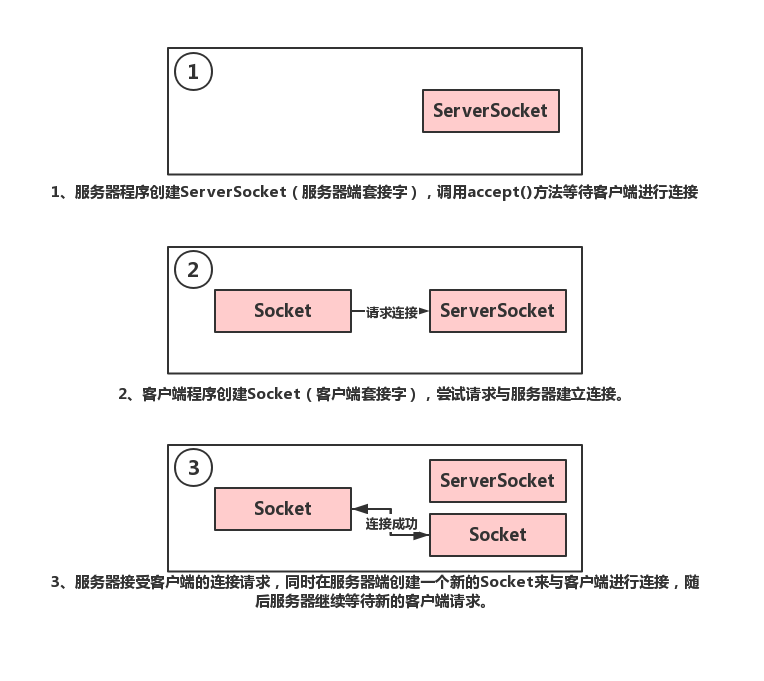JavaScript原生數組函數實例匯總
在JavaScript中,創建數組可以使用Array構造函數,或者使用數組直接量[],后者是首選方法。Array對象繼承自Object.prototype,對數組執行typeof操作符返回object而不是array。然而,[] instanceof Array也返回true。也就是說,類數組對象的實現更復雜,例如strings對象、arguments對象,arguments對象不是Array的實例,但有length屬性,并能通過索引取值,所以能像數組一樣進行循環操作。
在本文中,我將復習一些數組原型的方法,并探索這些方法的用法。
循環:.forEach 判斷:.some和.every 區分.join和.concat 棧和隊列的實現:.pop, .push, .shift,和 .unshift 模型映射:.map 查詢:.filter 排序:.sort 計算:.reduce和.reduceRight 復制:.slice 強大的.splice 查找:.indexOf 操作符:in 走近.reverse循環:.forEach
這是JavaScript中最簡單的方法,但是IE7和IE8不支持此方法。
.forEach 有一個回調函數作為參數,遍歷數組時,每個數組元素均會調用它,回調函數接受三個參數:
value:當前元素 index:當前元素的索引 array:要遍歷的數組此外,可以傳遞可選的第二個參數,作為每次函數調用的上下文(this).
[’_’, ’t’, ’a’, ’n’, ’i’, ’f’, ’]’].forEach(function (value, index, array) {this.push(String.fromCharCode(value.charCodeAt() + index + 2))}, out = [])out.join(’’)// <- ’awesome’
后文會提及.join,在這個示例中,它用于拼接數組中的不同元素,效果類似于out[0] + ” + out[1] + ” + out[2] + ” + out[n]。
不能中斷.forEach循環,并且拋出異常也是不明智的選擇。幸運的事我們有另外的方式來中斷操作。
判斷:.some和.every
如果你用過.NET中的枚舉,這兩個方法和.Any(x => x.IsAwesome) 、 .All(x => x.IsAwesome)類似。
和.forEach的參數類似,需要一個包含value,index,和array三個參數的回調函數,并且也有一個可選的第二個上下文參數。MDN對.some的描述如下:
some將會給數組里的每一個元素執行一遍回調函數,直到回調函數返回true。如果找到目標元素,some立即返回true,否則some返回false。回調函數只對已經指定值的數組索引執行;它不會對已刪除的或未指定值的元素調用。
max = -Infinitysatisfied = [10, 12, 10, 8, 5, 23].some(function (value, index, array) { if (value > max) max = value return value < 10})console.log(max)// <- 12satisfied// <- true
注意,當回調函數的value < 10時,中斷函數循環。.every的運行原理和.some類似,但回調函數是返回false而不是true。
區分.join和.concat
.join和.concat 經常混淆。.join(separator)以separator作為分隔符拼接數組元素,并返回字符串形式,如果沒有提供separator,將使用默認的,。.concat會創建一個新數組,作為源數組的淺拷貝。
.concat常用用法:array.concat(val, val2, val3, valn) .concat返回一個新數組 array.concat()在沒有參數的情況下,返回源數組的淺拷貝。淺拷貝意味著新數組和原數組保持相同的對象引用,這通常是好事。例如:
var a = { foo: ’bar’ }var b = [1, 2, 3, a]var c = b.concat()console.log(b === c)// <- falseb[3] === a && c[3] === a// <- true
棧和隊列的實現:.pop, .push, .shift和 .unshift
每個人都知道.push可以再數組末尾添加元素,但是你知道可以使用[].push(‘a’, ‘b’, ‘c’, ‘d’, ‘z’)一次性添加多個元素嗎?
.pop 方法是.push 的反操作,它返回被刪除的數組末尾元素。如果數組為空,將返回void 0 (undefined),使用.pop和.push可以創建LIFO (last in first out)棧。
function Stack () { this._stack = []}Stack.prototype.next = function () { return this._stack.pop()}Stack.prototype.add = function () { return this._stack.push.apply(this._stack, arguments)}stack = new Stack()stack.add(1,2,3)stack.next()// <- 3相反,可以使用.shift和 .unshift創建FIFO (first in first out)隊列。function Queue () { this._queue = []}Queue.prototype.next = function () { return this._queue.shift()}Queue.prototype.add = function () { return this._queue.unshift.apply(this._queue, arguments)}queue = new Queue()queue.add(1,2,3)queue.next()// <- 1Using .shift (or .pop) is an easy way to loop through a set of array elements, while draining the array in the process.list = [1,2,3,4,5,6,7,8,9,10]while (item = list.shift()) { console.log(item)}list// <- []
模型映射:.map
.map為數組中的每個元素提供了一個回調方法,并返回有調用結果構成的新數組。回調函數只對已經指定值的數組索引執行;它不會對已刪除的或未指定值的元素調用。
Array.prototype.map 和上面提到的.forEach、.some和 .every有相同的參數格式:.map(fn(value, index, array), thisArgument)
values = [void 0, null, false, ’’]values[7] = void 0result = values.map(function(value, index, array){ console.log(value) return value})// <- [undefined, null, false, ’’, undefined × 3, undefined]
undefined × 3很好地解釋了.map不會對已刪除的或未指定值的元素調用,但仍然會被包含在結果數組中。.map在創建或改變數組時非常有用,看下面的示例:
// casting[1, ’2’, ’30’, ’9’].map(function (value) { return parseInt(value, 10)})// 1, 2, 30, 9[97, 119, 101, 115, 111, 109, 101].map(String.fromCharCode).join(’’)// <- ’awesome’// a commonly used pattern is mapping to new objectsitems.map(function (item) { return { id: item.id, name: computeName(item) }})
查詢:.filter
filter對每個數組元素執行一次回調函數,并返回一個由回調函數返回true的元素組成的新數組。回調函數只會對已經指定值的數組項調用。
通常用法:.filter(fn(value, index, array), thisArgument),跟C#中的LINQ表達式和SQL中的where語句類似,.filter只返回在回調函數中返回true值的元素。
[void 0, null, false, ’’, 1].filter(function (value) { return value})// <- [1][void 0, null, false, ’’, 1].filter(function (value) { return !value})// <- [void 0, null, false, ’’]
排序:.sort(compareFunction)
如果沒有提供compareFunction,元素會被轉換成字符串并按照字典排序。例如,”80″排在”9″之前,而不是在其后。跟大多數排序函數類似,Array.prototype.sort(fn(a,b))需要一個包含兩個測試參數的回調函數,其返回值如下:
a在b之前則返回值小于0 a和b相等則返回值是0 a在b之后則返回值小于0[9,80,3,10,5,6].sort()// <- [10, 3, 5, 6, 80, 9][9,80,3,10,5,6].sort(function (a, b) {return a - b})// <- [3, 5, 6, 9, 10, 80]
計算:.reduce和.reduceRight
這兩個函數比較難理解,.reduce會從左往右遍歷數組,而.reduceRight則從右往左遍歷數組,二者典型用法:.reduce(callback(previousValue,currentValue, index, array), initialValue)。
previousValue 是最后一次調用回調函數的返回值,initialValue則是其初始值,currentValue是當前元素值,index是當前元素索引,array是調用.reduce的數組。
一個典型的用例,使用.reduce的求和函數。
Array.prototype.sum = function () {return this.reduce(function (partial, value) {return partial + value}, 0)};[3,4,5,6,10].sum()// <- 28
如果想把數組拼接成一個字符串,可以用.join實現。然而,若數組值是對象,.join就不會按照我們的期望返回值了,除非對象有合理的valueOf或toString方法,在這種情況下,可以用.reduce實現:
function concat (input) { return input.reduce(function (partial, value) { if (partial) { partial += ’, ’ } return partial + value }, ’’)}concat([ { name: ’George’ }, { name: ’Sam’ }, { name: ’Pear’ }])// <- ’George, Sam, Pear’
復制:.slice
和.concat類似,調用沒有參數的.slice()方法會返回源數組的一個淺拷貝。.slice有兩個參數:一個是開始位置和一個結束位置。Array.prototype.slice 能被用來將類數組對象轉換為真正的數組。
Array.prototype.slice.call({ 0: ’a’, 1: ’b’, length: 2 })// <- [’a’, ’b’]
這對.concat不適用,因為它會用數組包裹類數組對象。
Array.prototype.concat.call({ 0: ’a’, 1: ’b’, length: 2 })// <- [{ 0: ’a’, 1: ’b’, length: 2 }]
此外,.slice的另一個通常用法是從一個參數列表中刪除一些元素,這可以將類數組對象轉換為真正的數組。
function format (text, bold) { if (bold) { text = ’<b>’ + text + ’</b>’ } var values = Array.prototype.slice.call(arguments, 2) values.forEach(function (value) { text = text.replace(’%s’, value) }) return text}format(’some%sthing%s %s’, true, ’some’, ’other’, ’things’)
強大的.splice
.splice 是我最喜歡的原生數組函數,只需要調用一次,就允許你刪除元素、插入新的元素,并能同時進行刪除、插入操作。需要注意的是,不同于`.concat和.slice,這個函數會改變源數組。
var source = [1,2,3,8,8,8,8,8,9,10,11,12,13]var spliced = source.splice(3, 4, 4, 5, 6, 7)console.log(source)// <- [1, 2, 3, 4, 5, 6, 7, 8, 9, 10, 11, 12 ,13]spliced// <- [8, 8, 8, 8]
正如你看到的,.splice會返回刪除的元素。如果你想遍歷已經刪除的數組時,這會非常方便。
var source = [1,2,3,8,8,8,8,8,9,10,11,12,13]var spliced = source.splice(9)spliced.forEach(function (value) {console.log(’removed’, value)})// <- removed 10// <- removed 11// <- removed 12// <- removed 13console.log(source)// <- [1, 2, 3, 8, 8, 8, 8, 8, 9]
查找:.indexOf
利用.indexOf 可以在數組中查找一個元素的位置,沒有匹配元素則返回-1。我經常使用.indexOf的情況是當我有比較時,例如:a === ‘a’ || a === ‘b’ || a === ‘c’,或者只有兩個比較,此時,可以使用.indexOf:[’a’, ’b’, ’c’].indexOf(a) !== -1。
注意,如果提供的引用相同,.indexOf也能查找對象。第二個可選參數用于指定開始查找的位置。
var a = { foo: ’bar’ }var b = [a, 2]console.log(b.indexOf(1))// <- -1console.log(b.indexOf({ foo: ’bar’ }))// <- -1console.log(b.indexOf(a))// <- 0console.log(b.indexOf(a, 1))// <- -1b.indexOf(2, 1)// <- 1
如果你想從后向前搜索,可以使用.lastIndexOf。
操作符:in
在面試中新手容易犯的錯誤是混淆.indexOf和in操作符:
var a = [1, 2, 5]1 in a// <- true, but because of the 2!5 in a// <- false
問題是in操作符是檢索對象的鍵而非值。當然,這在性能上比.indexOf快得多。
var a = [3, 7, 6]1 in a === !!a[1]// <- true
走近.reverse
該方法將數組中的元素倒置。
var a = [1, 1, 7, 8]a.reverse()// [8, 7, 1, 1]
.reverse 會修改數組本身。
以上就是本文的全部內容,希望對大家的學習有所幫助,也希望大家多多支持好吧啦網。
相關文章:

 網公網安備
網公網安備